Search
To search for an exact match, type the word or phrase you want in quotation marks.
A*DESK has been offering since 2002 contents about criticism and contemporary art. A*DESK has become consolidated thanks to all those who have believed in the project, all those who have followed us, debating, participating and collaborating. Many people have collaborated with A*DESK, and continue to do so. Their efforts, knowledge and belief in the project are what make it grow internationally. At A*DESK we have also generated work for over one hundred professionals in culture, from small collaborations with reviews and classes, to more prolonged and intense collaborations.
At A*DESK we believe in the need for free and universal access to culture and knowledge. We want to carry on being independent, remaining open to more ideas and opinions. If you believe in A*DESK, we need your backing to be able to continue. You can now participate in the project by supporting it. You can choose how much you want to contribute to the project.
You can decide how much you want to bring to the project.
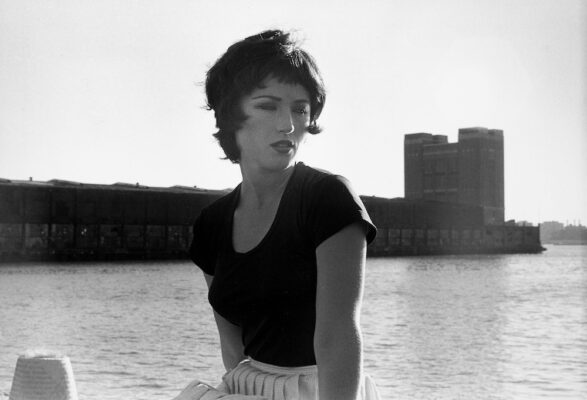
There is frequent discussion around how different players in the art ecosystem are redefining their roles and working models. Hauser & Wirth stands out in this regard—not only as one of the most influential galleries on the global art scene, but also for how it has developed each of its spaces in distinct ways, incorporating elements of environment and well-being that enrich the experience for collectors, clients, and visitors alike. Hauser & Wirth Menorca is a prime example, bringing together nature, sustainability, and a certain sense of exclusivity.
But this is not the time to analyze gallery models. Rather, we turn to the two exhibitions currently on view at this unique venue—solo shows by two artists with firmly established careers: Mika Rottenberg and Cindy Sherman.
Cindy Sherman. The Women
Encountering Cindy Sherman’s work is always noteworthy—especially considering that her last solo exhibition in Spain took place back in 1996 at the Museo Nacional – Centro de Arte Reina Sofía in Madrid, co-organized with the Boijmans Van Beuningen Museum in Rotterdam.
On this occasion, The Women brings together a compelling selection of works created between the 1970s and 2010s. Among them are some of her most iconic series, such as Untitled Film Stills (1977–1980), where Sherman stages fictional film stills that evoke the nouvelle vague, 1960s French cinema, Italian neorealism, and even Hitchcock.
This is the only series to which Sherman has assigned a title. As she explains in a documentary produced by Art21—screened as part of the exhibition—she generally avoids titling her works, feeling she isn’t particularly skilled at it and preferring instead to leave room for ambiguity and multiple interpretations. The show in Menorca also includes early pieces from her student years, already foreshadowing the aesthetic and conceptual approach of Untitled Film Stills. In these early images—as in much of her work—Sherman uses makeup, wigs, masks, and costumes, performing as model, director, and photographer by triggering the camera herself from within the scene. Also featured are selections from the Murder Series, where she embodies mysterious, everyday characters that anticipate some of the figures later seen in her commercial film Office Killer (1997).
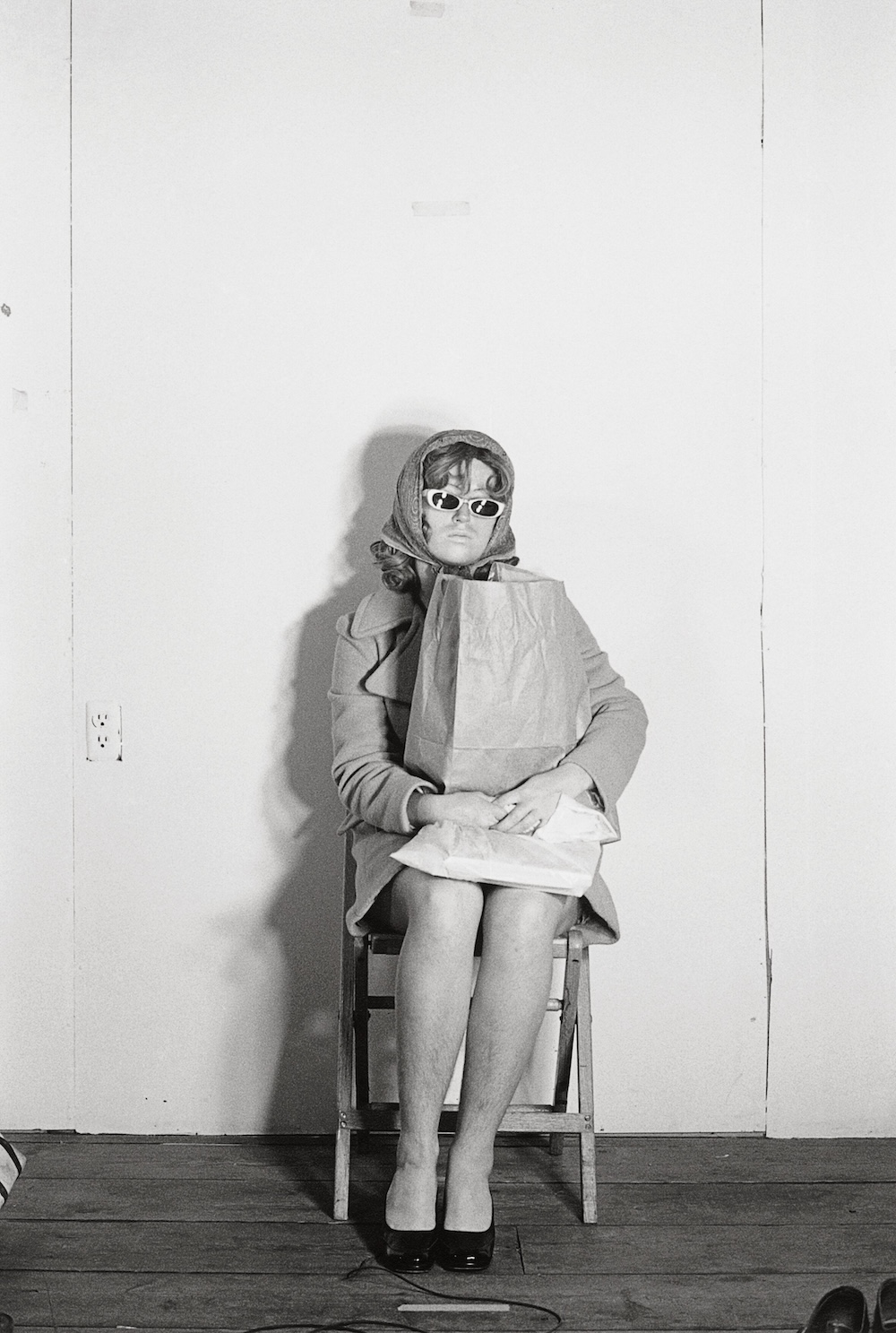
Cindy Sherman. Untitled #369. 1976/2000. Gelatin silver print. 25.4 x 20.3 cm / 10 x 8 in. © Cindy Sherman. Courtesy the artist and Hauser & Wirth
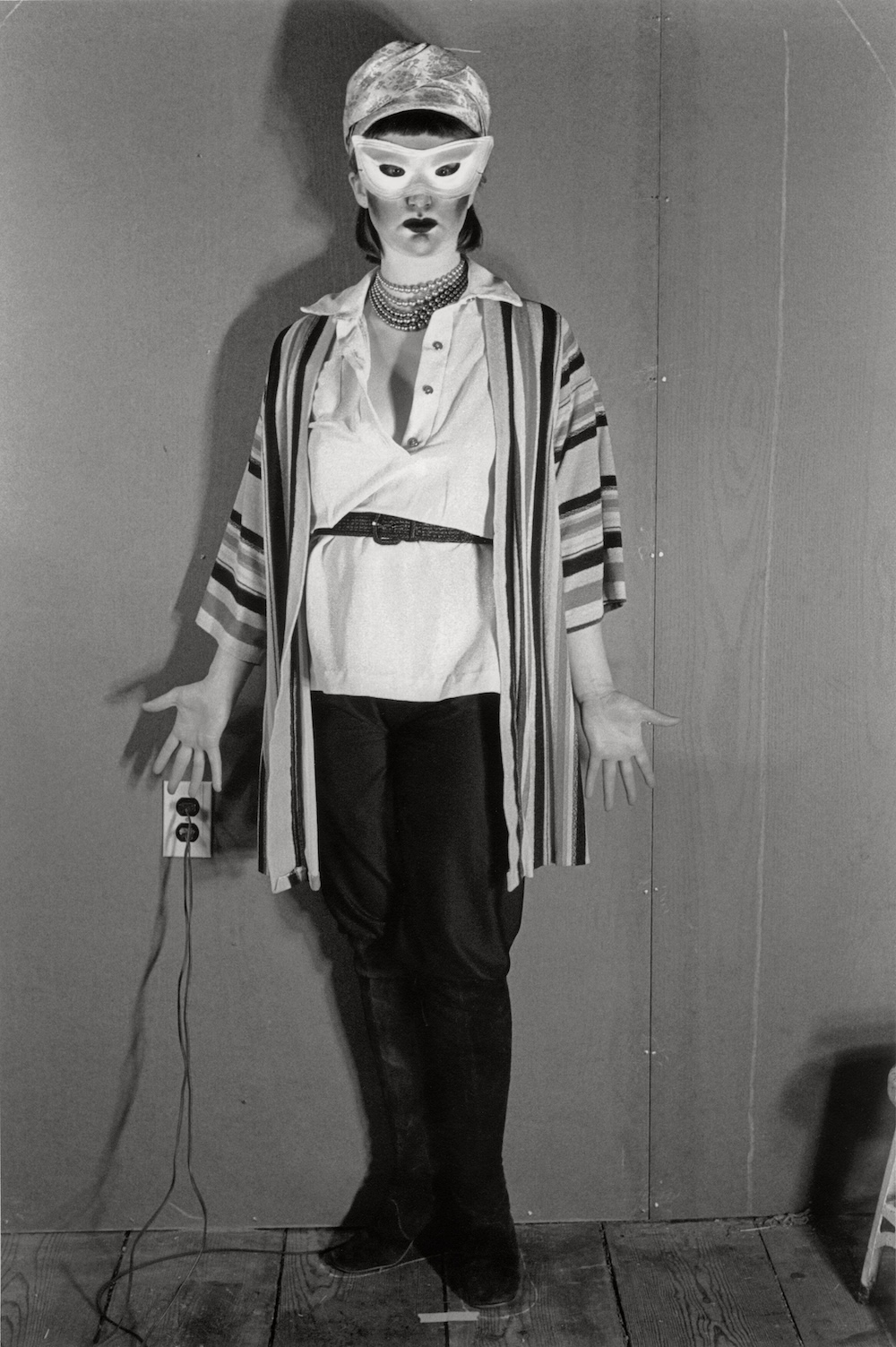
Cindy Sherman . Untitled #508. 1977/2011. Gelatin silver print. 25.1 x 20 cm / 9 7/8 x 7 7/8 in. © Cindy Sherman. Courtesy the artist and Hauser & Wirth
The heart of the exhibition, however, lies in her later explorations of women—middle-aged, from diverse social and economic backgrounds—placed in enigmatic settings. Sometimes these are dramatic, painterly landscapes that starkly contrast with the haute couture garments worn by the characters (in collaboration with Vogue and Harper’s Bazaar); other times, the works rely on layered compositions and double exposures.
The series informally known as The Flappers revisits different archetypes of women from the 1920s, ’30s and ’40s—figures who embodied empowerment and a desire to modernize society. These works also introduce themes of aging and the passage of time. One of the highlights of the documentary mentioned before shows Sherman in her studio, where she reveals drawers filled with dental prosthetics, ocular accessories, and masks. We also see her enthusiastically thrift-shopping for outfits—animal prints, sequins, and all manner of glittery attire—which often inspire the emergence of new photographic characters.
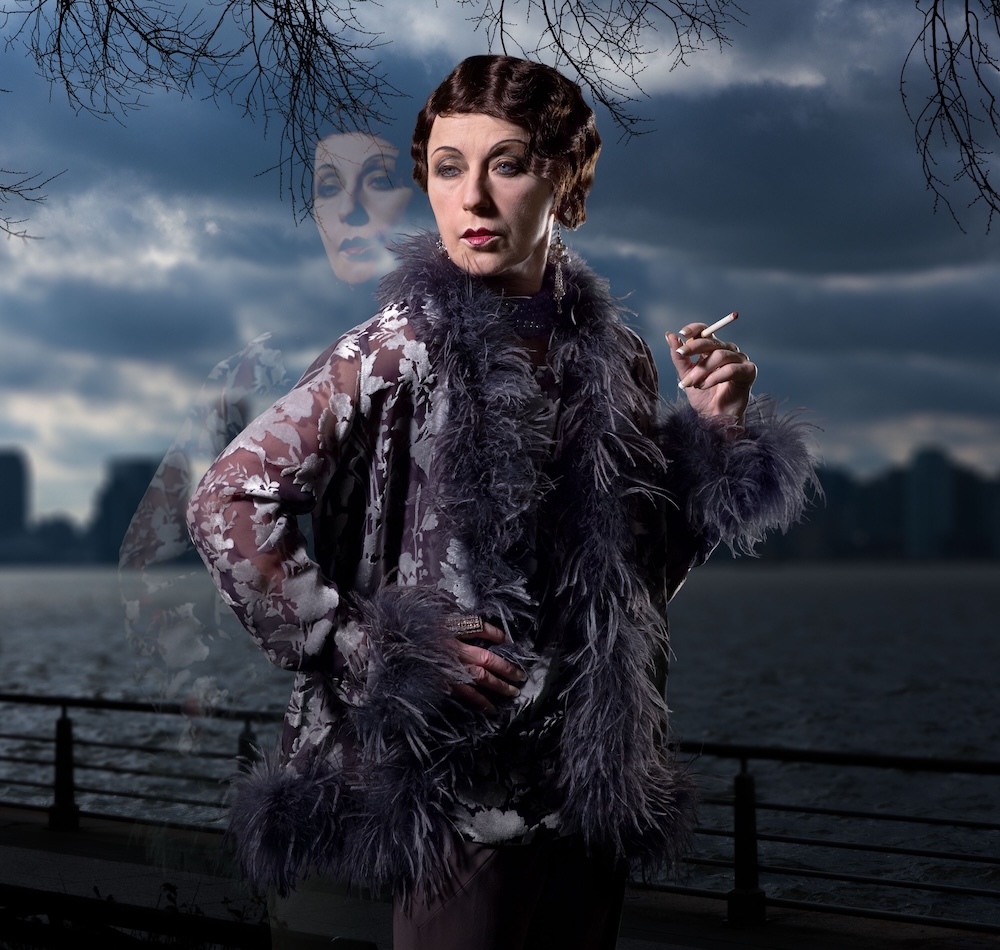
Cindy Sherman. Untitled #566. 2016. Dye sublimation metal print .121.9 x 128.3 cm / 48 x 50 1/2 in. © Cindy Sherman. Courtesy the artist and Hauser & Wirth
Her ongoing investigation into identity construction through self-representation—a central theme of her practice—feels particularly prescient in today’s era of social media, especially Instagram. Fittingly, one can find the cindyshermanlegacyproject on that very platform—an initiative by Hauser & Wirth devoted to preserving her photographs and ensuring the longevity of her artistic legacy.
Mika Rottenberg. Vibrant Matter
Mika Rottenberg’s Vibrant Matter blurs the line between reality and fiction to explore post-capitalist life systems and how they shape our existence. Her immersive installations and video works often confront viewers with absurd mechanisms of labor, production, and consumption. Two major pieces featured in the show are Cosmic Generator (2017)—first presented at Skulptur Projekte Münster—and Spaghetti Blockchain (2019).
Cosmic Generator weaves together real and imaginary scenes linking distant places such as Mexico, California, and a plastic goods market in China. Spaghetti Blockchain, meanwhile, focuses on materials—from raw substances to artificial textures, or the tiniest particles documented during a research stay at CERN. This three-channel video installation includes a meticulously crafted soundscape, incorporating everything from plastic ball manipulation and ASMR-style effects to traditional Siberian throat singing, generating immersive connections to both space and nature.
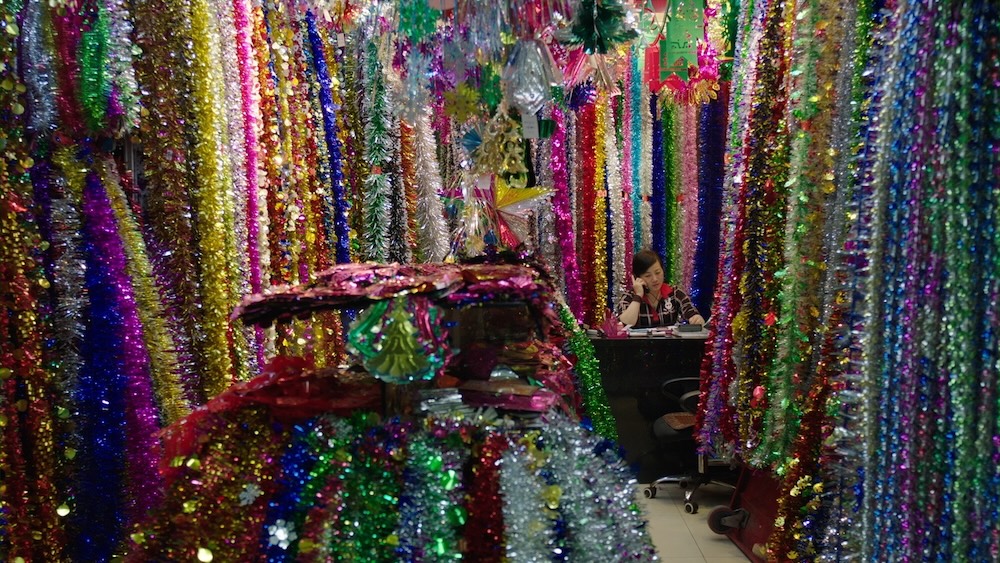
Mika Rottenberg. Cosmic Generator (Loaded #2) (Video Still) 2017/2018 Single channel video installation, sound, color; 26:36 min Dimensions variable. @Mika Rottenberg. Courtesy the artist and Hauser & Wirth
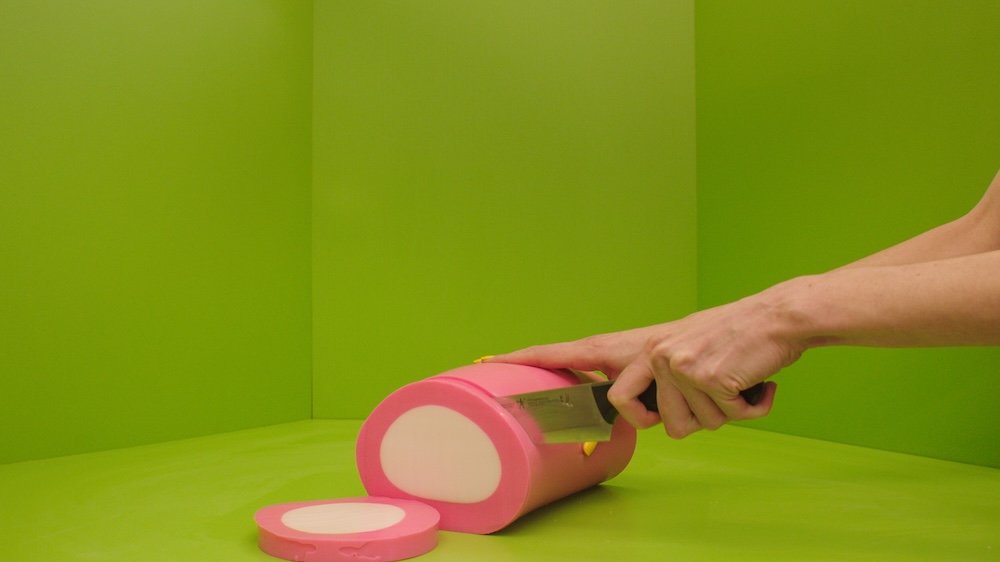
Mika Rottenberg. Spaghetti Blockchain (Video Still). 2019. 4k video installation with 7.1 surround sound, color; 18:15 min. Dimensions variable. © Mika Rottenberg. Courtesy the artist and Hauser & Wirth
This sonic dimension also enriches the visit to her latest installation, Lampshares (2024–2025), in which Rottenberg transforms her New York studio into a kind of circular economy. Created in collaboration with Inner City Green Team and Gary Dusek, this series of lamps is made from invasive vines gathered in upstate New York and recycled plastic sourced from local dumpsters. In doing so, Rottenberg builds functional sculptures from materials often considered waste or toxic. Yet these substances, derived from petroleum, originate from once-living organisms millions of years ago. By repurposing such detritus, the artist performs a gesture of transformation—redefining the negative connotations of these materials and postponing their environmental impact through renewed utility.
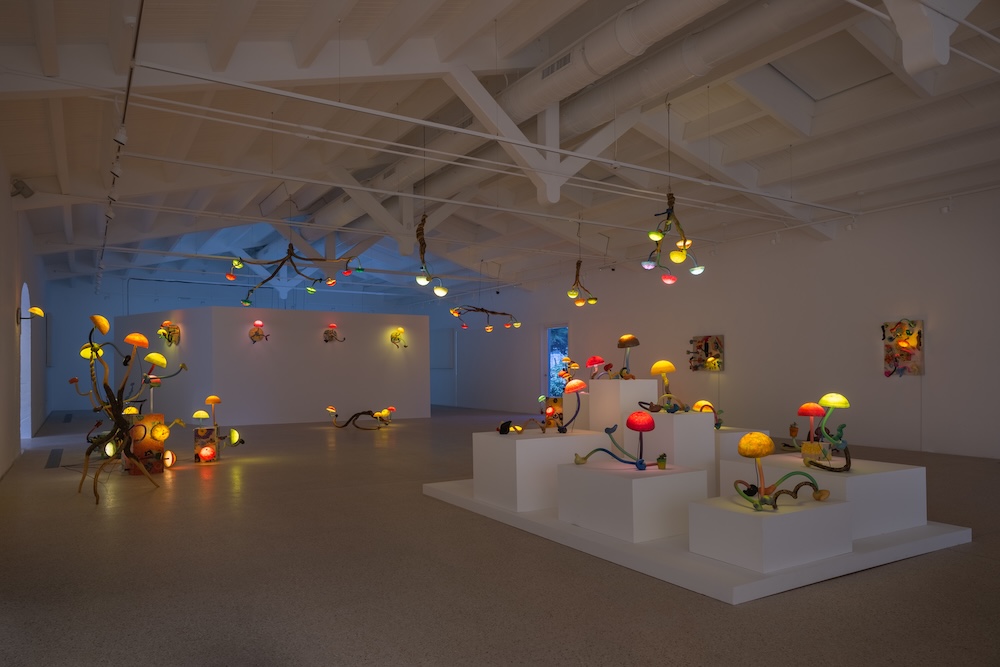
Installation view, ‘Mika Rottenberg. Vibrant Matter’, Hauser & Wirth Menorca, 2025. Photo: Damian Griffiths © Mika Rottenberg. Courtesy the artist and Hauser & Wirth
Cindy Sherman. The Women y Mika Rottenberg. Vibrant Matter are on view at Hauser & Wirth Menorca through 26 October 2025.
[Featured Image: Cindy Sherman. Untitled Film Still #24 . 1978. Gelatin silver print. 20.3 x 25.4 cm / 8 x 10 in. © Cindy Sherman. Courtesy the artist and Hauser & Wirth]
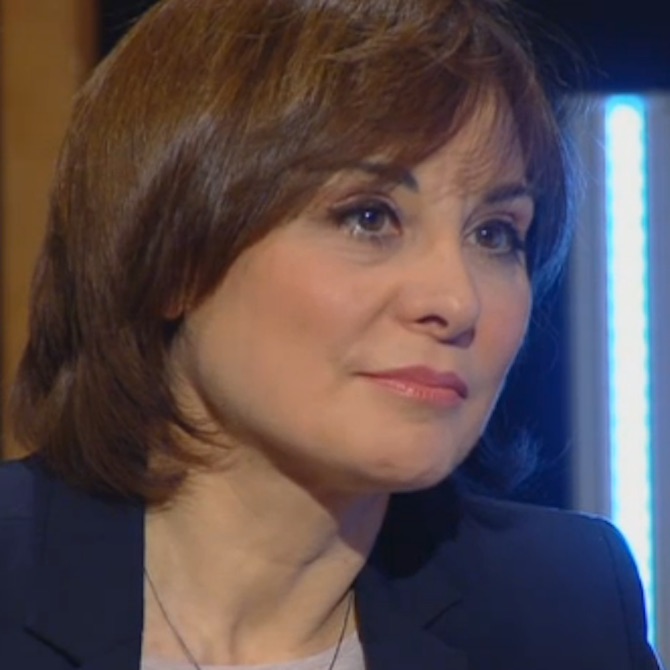
Montse Badia has never liked standing still, so she has always thought about travelling, entering into relation with other contexts, distancing herself, to be able to think more clearly about the world. The critique of art and curating have been a way of putting into practice her conviction about the need for critical thought, for idiosyncrasies and individual stances. How, if not, can we question the standardisation to which we are being subjected?
www.montsebadia.net
"A desk is a dangerous place from which to watch the world" (John Le Carré)